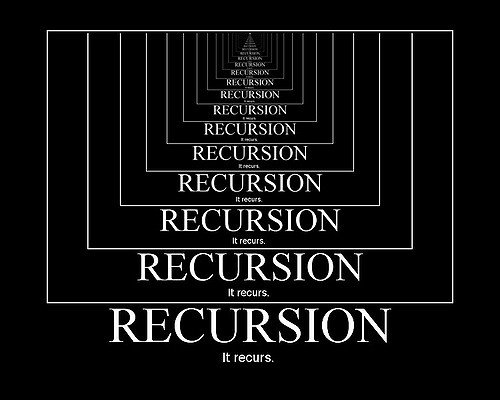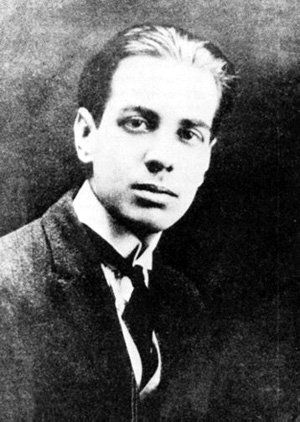Check out Part 1 here.
If you haven't read The Garden of Forking Paths, or it has been a while, I highly recommend you read it first! I don't want to spoil it for you and it's not too long, I promise! Check it out on the Internet Archive

Torley. flickr
This sense of beauty and mystery are captured by Borges’ use of labyrinths and recursive, infinite loops as major components of his fiction. Recursion is the property whereby objects or ideas refer back to themselves; an obvious example is the use of a labyrinth in narrative structure to describe a book that is a labyrinth itself, both of which elucidate a maze-like conception of time and reality. This structure, typically Borgesian, is reminiscent of nested Chinese boxes or Russian dolls: moving from a curious historical footnote, to Tsun’s confession, to Dr. Albert’s outline of Ts’ui Pen’s novel, to direct involvement in said novel. In his review of the work, Ralph Yarrow describes this framework as ”version enclosed within version, each narrative with its own range of reference and association, its own standards and horizons of truth” (83). As the story progresses, the lines between Tsun and the protagonists of Ts’ui Pen’s novel blur. Tsun Finds himself resigns to his Dreadful fate as though his Destiny was decided, and he was a mere actor with script in hand. Just as Ts’ui Pen was murdered by a stranger while composing a labyrinth to entrap all who entered, Dr. Albert is similarly slain by the stranger Yu Tsun, as he is revealing the secret of that very same Labyrinth. Borges employs these nested layers as a means of merging the world of the reader and the world of the book. Yarrow states that “each central symbol, theme, or idea is assimilated into a successfully more extensive context, which displaces it from central to relative importance.” In this way the reader is gradually pushed into a state in which he or she doesn't totally accept or reject anything” (81). Lost in Borges’ labyrinth, the reader is now open to alternative conceptions of space and time.

Borges in 1921, Public Domain.
Time Is a major preoccupation for Borges; it is the garden of forking paths. Borges declared, “Hume divined the existence of an absolute space, in which each thing has its place...I deny the existence of one single time, in which all events are linked” (Borges, Refutation 51). But even in a universe of limitless variation, Boges cannot escape the workings of recursionary forces. “I tend to return eternally to the Eternal Return,” he confesses in “A History of Eternity” (151). The theory of eternal return states that in infinity, every possible combination of events or circumstances must have occurred, and not just once but an infinite number of times. The universe thus cycles in a repeating loop of time for eternity. According to Borges, “Nietzsche dug up that intolerable Greek hypothesis of Eternal Return and attempted to infer from it an occasion for jubilance. From the most horrible idea possible, he proposed that it be the focus of delight,”for it offers man a kind of immortality (151). In “Garden” these concepts are most clearly illustrated by the ancient manuscript, written as an infinite labyrinth of time in which each plot choice precedes an endless succession of further choices. This framework allows every possible choice to remain frozen in time, “eternally open and possible” (Borges, Garden 267). The manuscript embodies “an infinite series of times, a growing, dizzying web of divergent, convergent and parallel times...that approach one another, fork, are snipped off, or are simply unknown…[and which]...contain all possibilities.” (265). Of course, such a hypothesis raises many further questions, with problems of free will and fate among them.
Check out Part 1 here.
Works Cited
Borges, Jorge Luis. “Borges and I.” Labyrinths. Trans. Irby, James.
New York; New Directions, 1964. 197.
---. “The Garden of Forking Paths.” Literature. Trans. Ed DiYanni, Robert.
New York: McGraw Hill, 2008. 269-9.
---. “A History of Eternity.” Selected Non-fictions.
New York: Penguin, 1999. 123.
---. “A New Refutation of Time.” A Personal Anthology.
Trans.Kerigan, Anthony. New York: Grove, 1967. 48-57.
---”Prologues to a Personal Library.” Selected Non-fictions.
New York: Penguin, 1999. 511.
Merrill, Lloyd. “Unthinking Thinking: Jorge Luis Borges, Mathematics, and the New Physics.”
West Lafayette: Purdue University Press, 1991.
Seiber, Shaon Lynn. “Time, Simultaneity, and the Fantastic in the Narrative of Jorge Luis Borges.” Romance Quaterly. 51.3 (Summer 2004): 200-211
Yarrow, Ralph. “Irony grows in my Garden: Generative Processes in Borges’ ‘The Garden of Forking Paths,’.” The Fantastic in World Literature and the Arts. Ed Donald E. Morse Greenwood Press, 1987. 73-86.